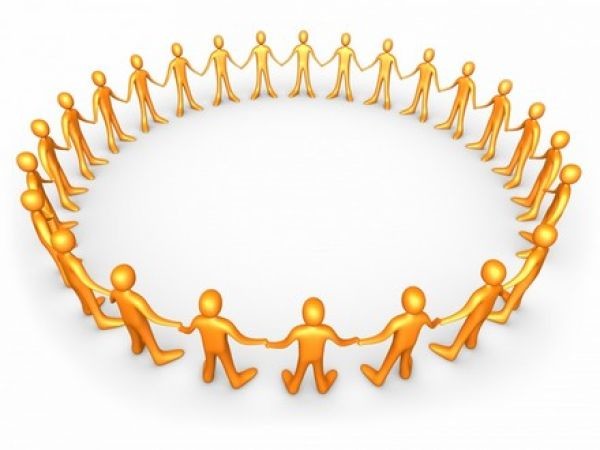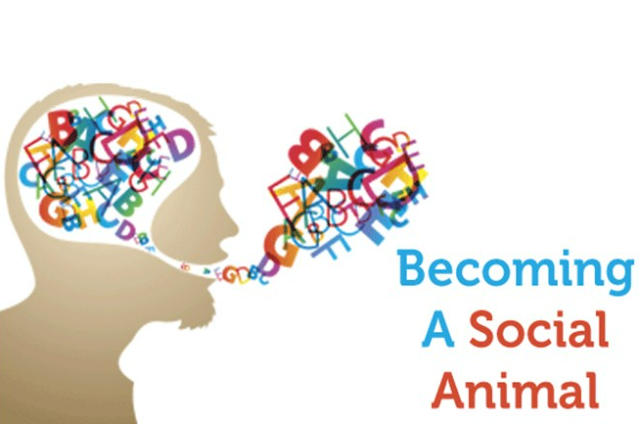Humans have long been acknowledged as social animals with a natural tendency towards community, connection, and collaboration. This article examines the history of this idea and considers its relevance to science and education. Drawing on a variety of disciplines, such as psychology, sociology, and evolutionary biology, we reveal new insights regarding human sociability. Here, we are talking about The Notion of Man as a Social Animal: Exploring Its Origins and Implications.
We investigate the enormous effects of social connections on human well-being, cognitive ability, and cultural evolution, ranging from early childhood development to the complexity of social networks. We learn more about why people flourish in the presence of social connections by examining these instructive and fascinating qualities.
Introduction
Human beings find comfort, development, and significance in their social connections, whether it is in the throbbing streets of cosmopolitan cities or the intimate bonds formed inside families. Our knowledge of human nature is based on the idea that humans are social creatures, which has fascinated academics and philosophers throughout history. In order to shed light on the transformational potential of social relationships and their influence on numerous dimensions of human existence, this essay intends to investigate the intriguing and educative elements of our sociability.
Ancient Perspectives
The concept of humans as social animals can be traced back to ancient Greek philosophy, particularly to the works of Aristotle. In his influential treatise “Politics,” Aristotle argued that humans are political animals, emphasizing the importance of social relationships and the formation of communities for human flourishing. He believed that human beings possess a natural inclination to live together in organized societies, enabling them to achieve their fullest potential. This view laid the foundation for subsequent discussions on human sociability.
Enlightenment Thinkers
Several renowned philosophers promoted the notion of humans as social beings throughout the Enlightenment Era. In his important essay “Discourse on Inequality,” Jean-Jacques Rousseau claimed that people are born as social creatures but are corrupted by society. He emphasized the value of basic human impulses and chastised society frameworks that prevented people from engaging in authentic social connections.
Another Enlightenment philosopher, Immanuel Kant, claimed that people are wired to engage and communicate with others. He felt that people are capable of logic and morality, which manifest themselves most fully in social settings. Kant’s viewpoint introduced a moral component to the concept of humans as social creatures, emphasizing the significance of social cooperation and ethical behavior.
Modern Perspectives:
In the twentieth century, sociologists and biologists investigated the notion of humans being social creatures further. A pioneering sociologist, Émile Durkheim, claimed that social interactions are crucial for sustaining societal order and cohesiveness. His research on suicide rates emphasized the importance of social integration and social regulation in determining individual well-being. Durkheim’s studies highlighted the critical significance of social contact in molding human behavior and mental health.
The biological study has also offered support for humans’ social character. Neuroscientists have found “mirror neurons” in the human brain, which are active when we see or imitate the activities of others. This implies that humans are physiologically designed to comprehend and interact with other people, giving a brain foundation for our social behaviors.

Interesting Facts:
Take into consideration the following fascinating facts that demonstrate humans’ intrinsic sociability:
• Human Language: The ability to communicate through sophisticated language distinguishes humans from other animals. Language promotes social connection by allowing people to express their ideas, feelings, and emotions.
• Social Networks: Throughout history, humans have created sophisticated social networks ranging from small tribal groups to enormous global nations. These networks highlight our need for social relationships and community building.
• Oxytocin: The hormone oxytocin, sometimes known as the “love hormone,” is linked to social connection, trust, and empathy. Its release in the brain fosters emotions of attachment and connection between people.
• Evolutionary Adaptation: According to evolutionary theory, humans developed as social creatures due to the benefits offered by social cooperation. Our forefathers were able to hunt, collect resources, and defend one another more successfully because they lived in groups
The Social Characteristics of People are Analysed in a Table:
Let’s examine some crucial traits that define us as social creatures in order to investigate our social nature better:
| Characteristic | Explanation |
| Emotional Bonding | Humans build strong emotional relationships and attachments to their loved ones, friends, and romantic partners. Support, affection, and a sense of belonging are all provided by these ties. |
| Cooperative Behaviour | Humans are capable of cooperating to accomplish shared objectives. We can create complex communities, work together on initiatives, and address issues as a group thanks to cooperation. |
| Cultural Transmission | Humans are capable of passing on knowledge, values, and worldviews from one generation to the next. This cultural transmission promotes social learning and the growth of customs and norms that are universally accepted. |
| Empathy and Altruism | Humans are empathetic and engage in altruistic behavior, demonstrating care for the welfare of others. This capacity for empathy and selflessness encourages social cohesiveness and contributes to the creation of strong communities. |
| Social Hierarchies | Social hierarchies and power dynamics are created by humans. Social interactions and social duties and obligations are shaped by these structures. |
| Communication Skills | Humans have created sophisticated systems for verbal and nonverbal communication. The interchange of information, ideas, and emotions strengthens social ties when communication is effective. |
Socialization’s Effects
Occasionally, in animals with a high degree of job specialization, an individual’s caste determines their phenotype, or collection of physical traits. Gender-specific body type distinctions are superseded by this concept. An animal’s social function could be so unique that it develops a physical type specifically suited for it. The animal’s appearance often makes the job clear. Although termites and honeybees exhibit this behavior often, it is quite uncommon in vertebrates.
These internal hormones or external pheromones are often the basis for this phenotypic variance. Pheromones are hormones that are expelled into the environment and have the power to affect an animal’s growth, behavior, and appearance. Pheromones have effects that are species-specific, meaning that they normally only have an impact on members of the same species. Individuals’ exposure to certain pheromones may be changed by the sort of food they eat, environmental factors, and population ratios between castes, which can all directly or indirectly impact how they behave in terms of their caste.
Numerous creatures exhibit sociability, but two, in particular, provide examples of very sophisticated animal communities. Despite having very different evolutionary histories, termites and naked mole rats have a similar social structure. Ecologists may wonder why this social technique has repeatedly evolved in different branches of the evolutionary tree, given its success. Understanding these animals’ social behavior may aid the theoretical justification of this organizational structure.
The categorization word eusocial is used to describe creatures with the greatest level of friendliness. Because eusocial creatures must have a division of labor in the reproductive process, many infertile people must assist others who are able to reproduce. Additionally, they must be divided into a system of distinct castes that may be identified by variations in skeletal or physical traits, and these castes must take turns caring for the young. The generations must also be contemporaneous, which means that the young cannot develop before another generation of young is born. This definition covers both termites and naked mole rats.
Conclusion:
Humans’ natural friendliness has been a defining feature throughout our evolutionary history. Our social connections impact our identities, cognition, and well-being from the earliest stages of childhood through the intricacies of social networks and cultural evolution.
Accepting and comprehending our social nature provides essential educational and scientific insights, encouraging empathy, collaboration, and the formation of inclusive societies. Let us treasure the transforming potential of social connections in enhancing our lives and influencing our common destiny as we continue to discover the secrets of human sociability.







